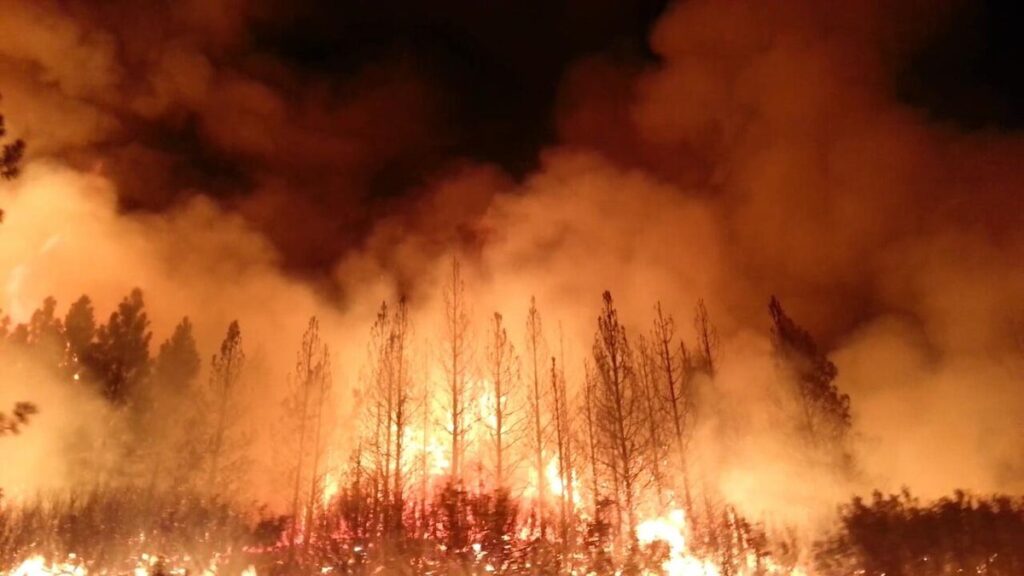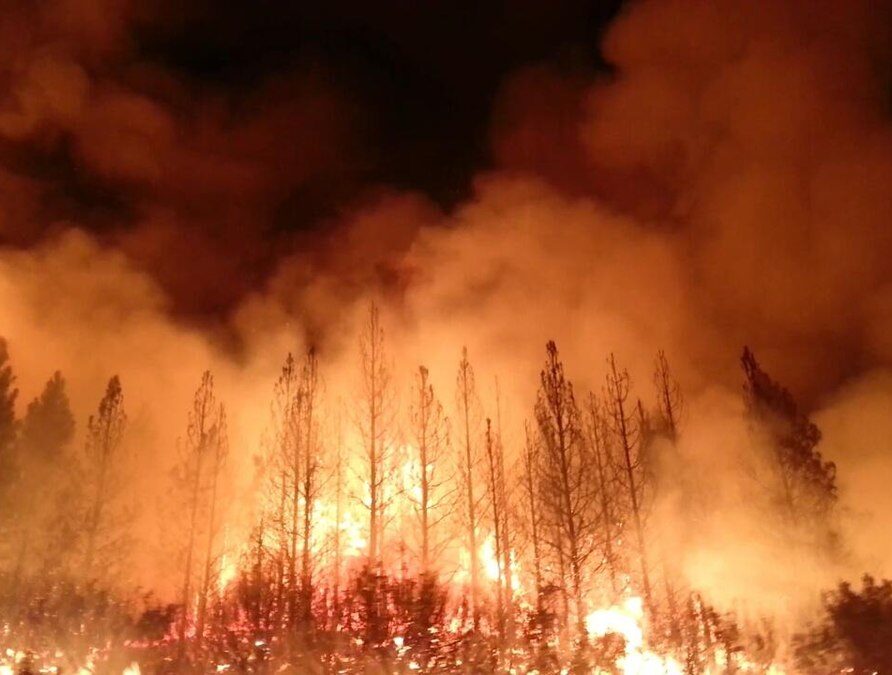By Rhea Ghosal

In March 2025, smoke from the Crabapple Fire north of Fredericksburg pushed across the Hill Country toward Austin. News alerts kept stuttering in, and by morning a family friend’s house was gone. Later we stood in a kitchen that still smelled of smoke, talking about wind, dryness, and how fast the fire moved. In the days after, I wasn’t trying to make anything about math—I was just trying to make sense of it. I found myself doing what I always do when things get messy: looking for patterns that hold, checking edge cases, and changing the viewpoint when the picture is noisy. Only later did I realize those habits, the ones I’d practiced on the American Invitational Mathematics Examination (AIME) and the USA Junior Mathematical Olympiad (USAJMO) problems, could help me build a small early‑warning signal so people might have a little more time.
My math life started with scratch paper, a compass, and too many triangles. Preparing for AIME and USAJMO, I learned to sit with a problem until it revealed its shape. I chased concurrency with Ceva and Menelaus (both help prove when lines inside a triangle meet at a point or line up), looked for collinearities along Euler’s line, and reached for Power of a Point or the Nine‑Point Circle when symmetry hid in plain sight. What stuck wasn’t a favorite trick. It was this: name the structure, pick the right view, and earn the edge cases.
Past contests, the classes widened. Linear algebra stopped being boxes of numbers and became movement: rotate here, project there, clean up the noise with orthogonality. I started to hear eigenvalues and eigenvectors as the directions a transformation prefers—the ones it stretches or shrinks cleanly. Multivariable calculus made me look in more than one direction at once—follow the gradient, feel the curvature, notice how volume shifts when you change coordinates. Inequalities like AM–GM and Cauchy–Schwarz grew from contest moves into statements about shape. It all felt like one toolkit getting sharper.
That toolkit finally left the page when I tried to help with micro‑wildfire risk. I pulled together what the world was already saying—satellite tiles, weather, terrain, a few local sensors—and tried to turn it into a steady early nudge. I lined up timestamps that didn’t want to line up; one night I realized a sensor was drifting by exactly an hour after a storm, and half my “mystery signals” vanished when I fixed that clock.
The contest habits came back in small ways. I kept a few invariants that were not allowed to slip—clean time intervals, honest flags for missing data—because everything downstream depends on them. When the picture got noisy, I changed the viewpoint, just like switching from synthetic to coordinates in a geometry proof: sometimes I worked with image patches, sometimes with simple summaries like wind roses and slope bins. I set useful bounds on inputs the way you would in an inequality problem, and I pushed the system to the edge—driest weeks, windiest days, heavy clouds—to see where it broke. Before trusting any global claim, I did careful casework by region and season.
What I built relied on a few clear algorithms, each traced back to how math trained me to think. Convolutional Neural Networks (CNNs) handled satellite image patches—the “filters” are just small matrices sliding across pixels, like applying a familiar linear operator over and over. Linear algebra made that concrete: eigenvectors as preferred directions, projections as cleanup. For changing weather, I used a Long Short‑Term Memory (LSTM) network—careful casework in time: remember what matters, ignore what doesn’t. For terrain and sensor fusion, Random Forest (RF) and XGBoost (eXtreme Gradient Boosting) were the workhorses: they split space into cases, the way geometry splits configurations, and then vote. I kept a simple logistic regression baseline too—a reminder from inequalities that clear, bounded models can be honest and useful. Optimization tied it together: gradients from multivariable calculus pointed the way, and probability turned raw scores into calibrated risk.
Under the hood it was still math. Linear algebra structured what the networks were doing; calculus explained why training steadied or wandered; probability turned a score into something a planner could trust. If you’re curious about the build itself, I wrote up the details here: AI‑Driven Micro‑Wildfire Prediction and Evacuation Planning Using Multi‑Modal Data Fusion (https://www.techrxiv.org/users/932476/articles/1303271-ai-driven-micro-wildfire-prediction-and-evacuation-planning-using-multi-modal-data-fusion).
At the same time, I was fortunate to work under the mentorship of Dr. Suho Oh at Texas State University on a quieter project in combinatorial topology. Together we studied when certain 3D shapes made of tetrahedra can be built one clean piece at a time—a property called shellability (building a complex shape one piece at a time without making a mess at the seams). Dr. Suho Oh pushed me to test tiny cases, look for the one configuration that would break our idea, and only then try to say something general.
A few principles kept repeating themselves. The right representation changes everything. Local fixes matter before grand claims. Calibration is a kind of honesty. And the edge cases you’re tempted to ignore are usually the ones that teach you the missing line in your argument.
I’m sharing this because math gave me a language that travels. It lives in community work—like building a small, steady signal for planners during fire season.

Rhea Ghosal is a 15-year-old junior at Westlake High School in Austin, Texas, who loves using math and coding to tackle real-world problems in sustainability and healthcare. Along the way, she has qualified for the USA(J)MO, the USA Physics Olympiad, and the USA Computing Olympiad with a Gold division, and her wildfire forecasting research was selected for MathFest 2025’s Undergraduate Poster Session. She also serves as a Global Women in Data Science Ambassador.
